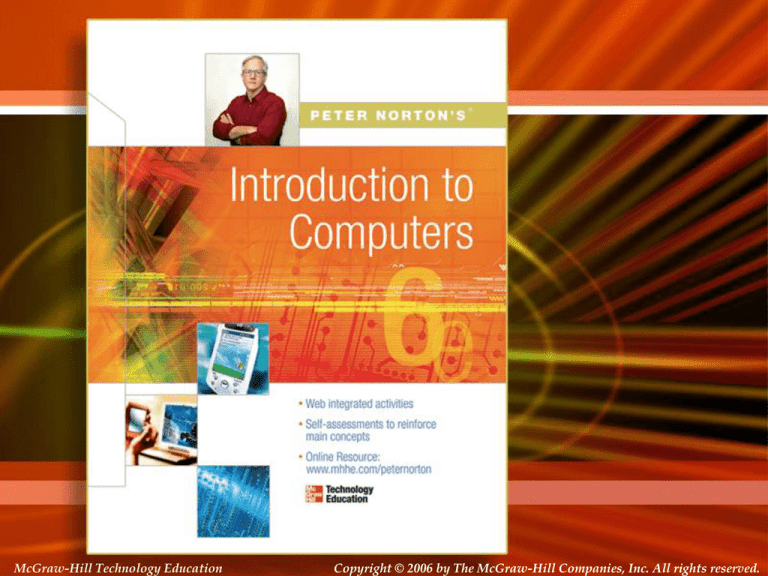
McGraw-Hill Technology Education
McGraw-Hill Technology Education
Copyright © 2006 by The McGraw-Hill Companies, Inc. All rights reserved.
Copyright © 2006 by The McGraw-Hill Companies, Inc. All rights reserved.
Chapter 10B
Doing Business in the
Online World
McGraw-Hill Technology Education
Copyright © 2006 by The McGraw-Hill Companies, Inc. All rights reserved.
Consumer E-Commerce
• Online shopping
– Purchasing through a web site
– Also called Business to Consumer (B2C)
– List of products is nearly endless
– Features
• Searchable catalog
• Secure checkout
• Customer support page
10B-3
Consumer E-Commerce
• Online stores versus brick and mortar
– Brick and mortar implies a physical store
– Brick and mortar properties
• Limited hours
• Salespeople can offer assistance
• Customers can handle the merchandise
– Online store properties
• Store is open 24 x 7
• Salespeople usually not available
• Can only view the merchandise
10B-4
Online vs. Brick and Mortar
Online store catalog
10B-5
Brick and mortar store experience
Consumer E-Commerce
• Using online catalogs
– Good online stores have a catalog
– Products are often arranged by category
– Products can be found by keyword
10B-6
Consumer E-Commerce
• Paying for purchases
– Vendors accept several payment methods
• Credit cards
• Paypal
• Electronic Fund Transfer
– May need to create an account
• Simplifies shipping
• Encourages repeat shopping
10B-7
Consumer E-Commerce
• Getting customer service
– Needed to resolve problems
– Understand the policies before ordering
– Contact information
• How you contact the vendor
– Return policies
• Availability and fee for returning items
– Shipping policies
– Charges and fees
• Convenience fees
10B-8
Consumer E-Commerce
• Online banking
– Most teller services handled online
– Balances can be obtained
– Bills can be paid
– Access is typically very secure
– Not available at all banks
10B-9
Consumer E-Commerce
• Online finance
– Broker and investment services
– Costs less than a traditional broker
– Stocks and bonds can be traded
– Loans can be procured
– Tax returns can be filed
10B-10
Business E-Commerce
• Business to business (B2B)
– Business transaction between companies
– Accounts for the majority of e-commerce
– Initially private networks were used
– Common transactions
• Reorder inventory
• Purchase stocks
• Credit checks
10B-11
Business E-Commerce
• Intranets and extranets
– Business partners must work together
• Networks must work together
– Intranet uses Internet technologies
• Only internal workers can access resources
• Use a standard browser to access resources
– Extranets open the Intranet to clients
• Clients have password level access
• Allows the same abilities as employees
– Very simple to use and setup
10B-12
Business E-Commerce
• Telecommuters
– Employee working outside of the office
– Connects to the office through technology
– Several technologies are used
• Home computer and the Internet
• Key card changes passwords often
• Encryption is used to protect data
10B-13
Security
• Improved security measures
– Before 1998, Web security was nonexistent
– Now safer than restaurant purchases
– All reputable sites protect their customers
10B-14
Security
• Secure web pages
– Allows safe transmission of credit card
– Use the secure socket layer (SSL)
• Encrypts data transmission to the server
– Secure pages are easily identified
• URL uses https://
• Browser status bar shows a closed lock
10B-15
Secure pages
10B-16
Chapter 10B
End of Chapter
McGraw-Hill Technology Education
Copyright © 2006 by The McGraw-Hill Companies, Inc. All rights reserved.





